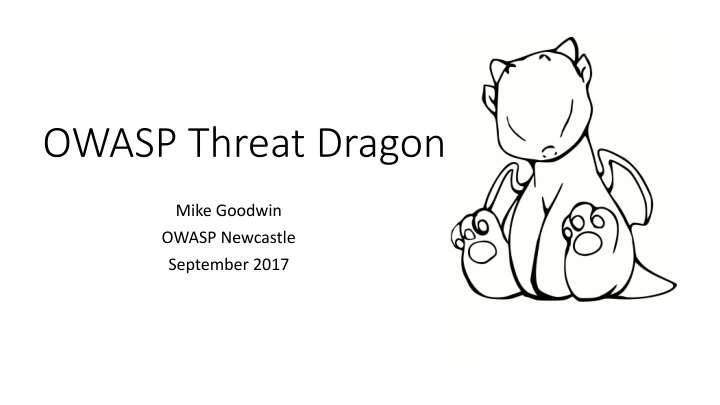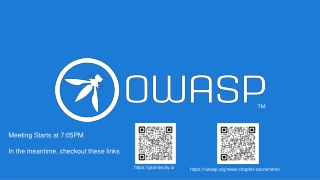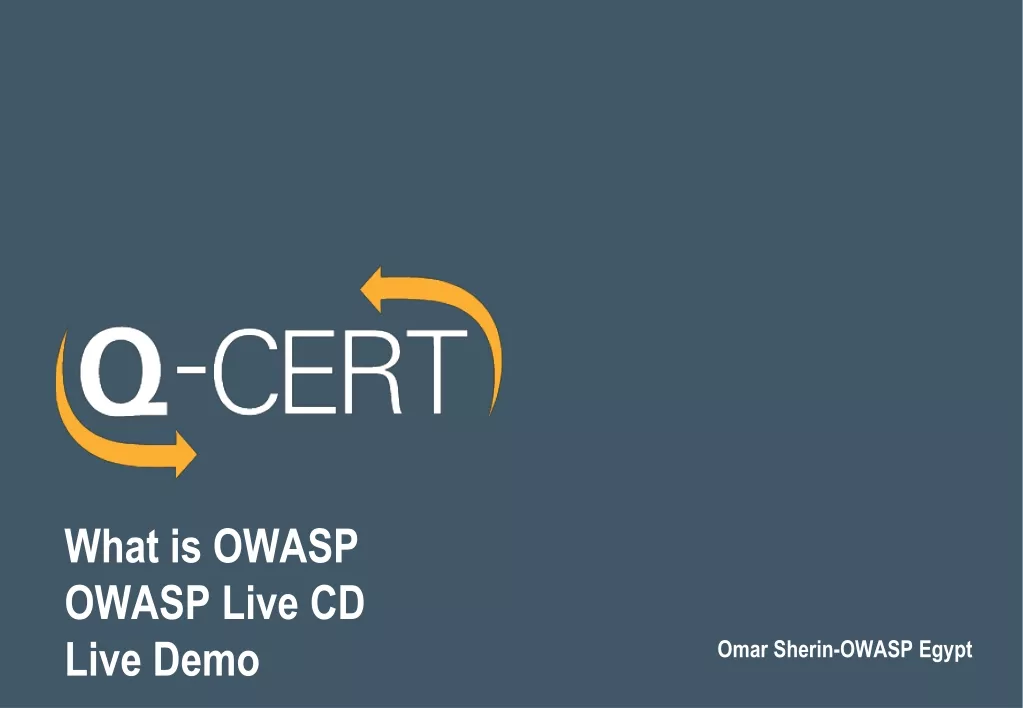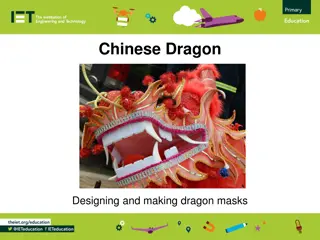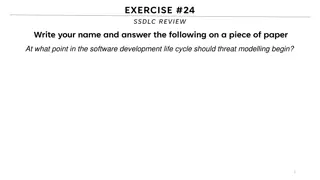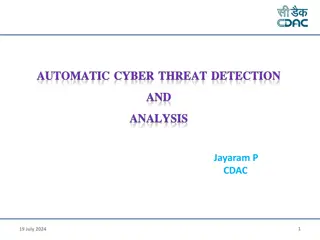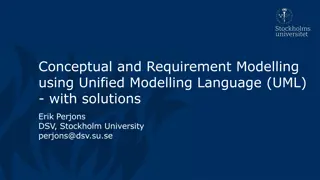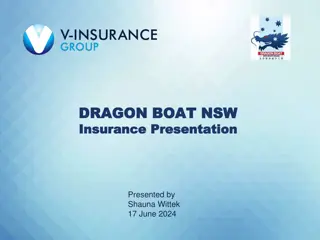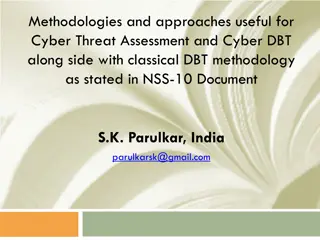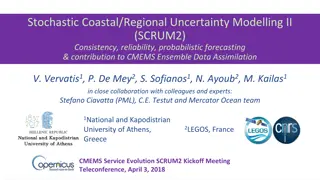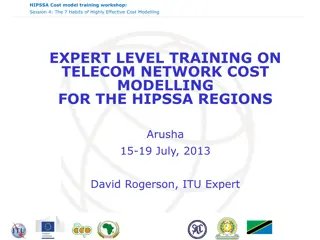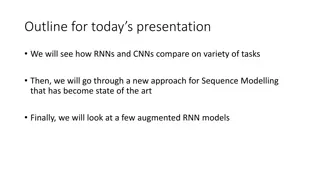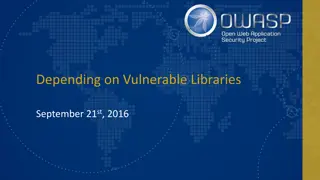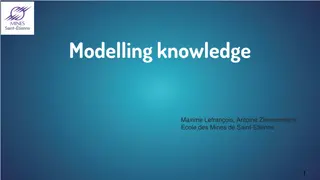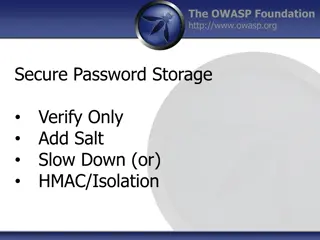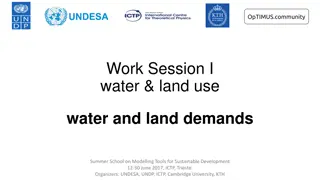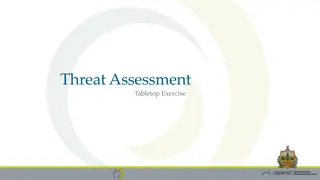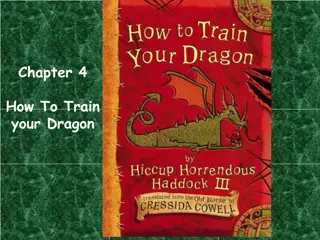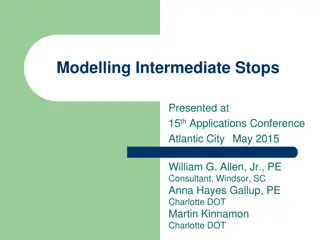OWASP Threat Dragon - Threat Modelling Overview
Threat modelling is a systematic process to identify and prioritize potential threats from an attacker's perspective, providing defenders with a comprehensive analysis for enhancing security measures. Discover the significance of threat modelling, data flow diagrams, STRIDE methodology, project goals, technology overview, and more in OWASP Threat Dragon. Explore the roadmap for threat generation and threat libraries based on application contexts.
Uploaded on Feb 23, 2025 | 0 Views
Download Presentation

Please find below an Image/Link to download the presentation.
The content on the website is provided AS IS for your information and personal use only. It may not be sold, licensed, or shared on other websites without obtaining consent from the author.If you encounter any issues during the download, it is possible that the publisher has removed the file from their server.
You are allowed to download the files provided on this website for personal or commercial use, subject to the condition that they are used lawfully. All files are the property of their respective owners.
The content on the website is provided AS IS for your information and personal use only. It may not be sold, licensed, or shared on other websites without obtaining consent from the author.
E N D
Presentation Transcript
OWASP Threat Dragon Mike Goodwin OWASP Newcastle September 2017
Agenda Threat modelling overview (optional) Project goals Internals Demo Where next?
What is threat modelling? Threat modelling is a process by which potential threats can be identified, enumerated, and prioritized all from a hypothetical attacker s point of view. The purpose of threat modelling is to provide defenders with a systematic analysis of the probable attacker s profile, the most likely attack vectors, and the assets most desired by an attacker. - Wikipedia
STRIDE S spoofing T tampering R repudiation I information disclosure D denial of service E elevation of privilege
Goals and status Free, open-source and cross platform Fun and engaging user experience Aligned and integrated with developer tools Powerful threat generation engine Currently an OWASP Incubator Project
Technology overview Angular web client shell Electron app shell Core Core Components Components Node.js Web App Web application variant Desktop application variant
Core vs. shell Core (85% of the code) Web app Desktop app shell Diagramming Container Container Threat generation Authentication Installer and automatic update Threat model encapsulation Interaction with GitHub Interaction with file system Core plumbing and navigation
Roadmap: Threat generation Threat libraries Based on context of the application (e.g. eCommerce threats) https://www.owasp.org/index.php/OWASP_Automated_Threats_to_Web_Applications Based on the context of an element (e.g. elements connected to data flows across trust boundaries) User defined Balance between doing too much and not doing enough (Plumbing) Replace rule engine
Roadmap: Improve UX and add features Selecting private/public repos Undo/redo Threat model reports* Diagramming improvements Capture more information about models/elements (to support threat generation) Code signing/auto-update for OSX
Roadmap: Integration More source control systems (e.g. BitBucket, GitHub Enterprise) Integrate threats with GitHub issues (or other ticketing system) Merging changes from different people Deeper workflow integrations*
OWASP Threat Dragon Model has open, high severity threats OWASP Threat Dragon Model was reviewed <1 day ago
What does it need most? Progression to Labs People to try it and give feedback Contributors/collaborators
Links GitHub: https://github.com/mike-goodwin/owasp-threat-dragon https://github.com/mike-goodwin/owasp-threat-dragon-core https://github.com/mike-goodwin/owasp-threat-dragon-desktop Docs: http://docs.threatdragon.org/ Live demo: https://threatdragon.org/ OWASP project page: https://www.owasp.org/index.php/OWASP_Threat_Dragon
Me @theblacklabguy mike.Goodwin@owasp.org
